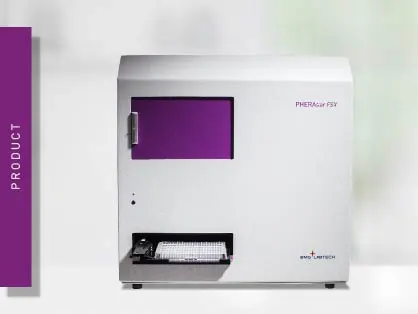
PHERAstar FSX
Powerful and most sensitive HTS plate reader
Nitration, in general, is the process of introduction of a nitro group (-NO2).
 Dr EJ Dell
Dr EJ Dell
For proteins it represents a post-translational modification that occurs primarily on tyrosine residues. The effect of which seems to vary greatly.
A recent study published in PNAS entitled: "Nitration of Hsp90 induces cell death" describes how nitration as a result of oxidative stress can turn a normally helpful protein into a toxic protein. This 90 kDa heat-shock protein is a part of the highly conserved family of proteins that are well characterized for their function as chaperones. So for Hsp 90 to be able to convert into a protein that induces cell death may, at first, seem illogical. However, since Hsp 90 plays a role in up to 200 cell functions, when it is shut down by tyrosine nitration, all of those cell functions are adversely affected.
The presence of tyrosine nitrated Hsp 90 is seen in a number of different pathologies and it is hoped that finding a drug that protects against tyrosine nitration may provide protection for a variety of degenerative diseases.
One of the main antioxidant systems employed to keep oxidative stress at bay is the thioredoxin reduction pathway. BMG LABTECH "AN167: Comparison of thioredoxin activity in cortical neuron and glial cells using a BMG LABTECH microplate reader" describes how thioredoxin activity can be studied in neurons and glial cells using the FLUOstar OPTIMA.
Powerful and most sensitive HTS plate reader
Most flexible Plate Reader for Assay Development
Upgradeable single and multi-mode microplate reader series
Flexible microplate reader with simplified workflows
Innovation for targeted protein degradation and next-generation degraders is gathering pace. This blog introduces some of the different approaches that act via the lysosome or proteasome.
The choice of assay for targeted protein degradation studies is crucial. But what is the preferred assay and detection technology for your specific research needs and microplate reader?
Molecular glues are small molecules that help target unwanted proteins for destruction by the ubiquitin-proteasome system. Find out how microplate readers can advance molecular glue research.
PROTACs are small, readily designed molecules that target unwanted proteins to the cell’s ubiquitin-proteasome system for degradation. Find out how microplate readers can advance PROTAC research.
The tau protein plays a role in many neurological diseases and disorders. Find out about neuronal toxicity induced by tau and how microplate readers can aid tau research.
G protein-coupled receptors are a gateway to many cellular responses. Find out how microplate readers can be used to support GPCR research.